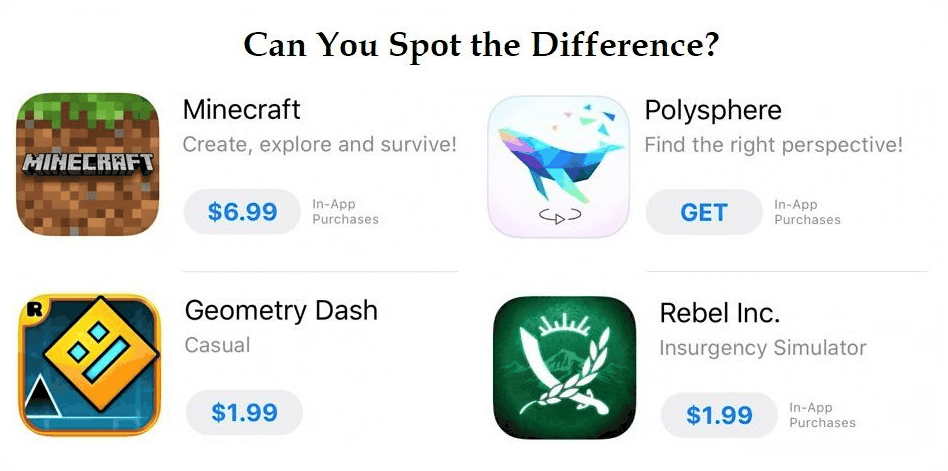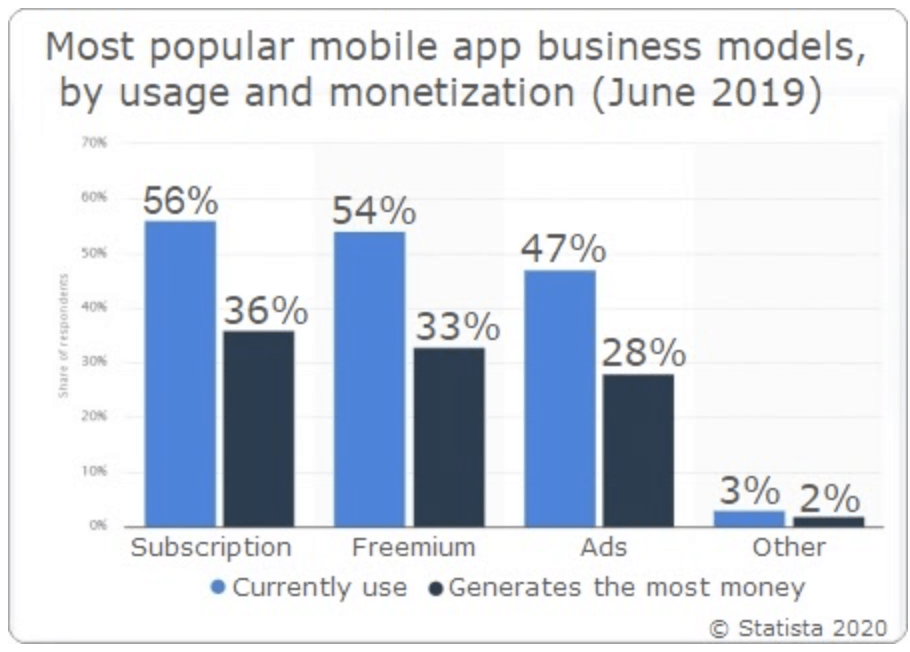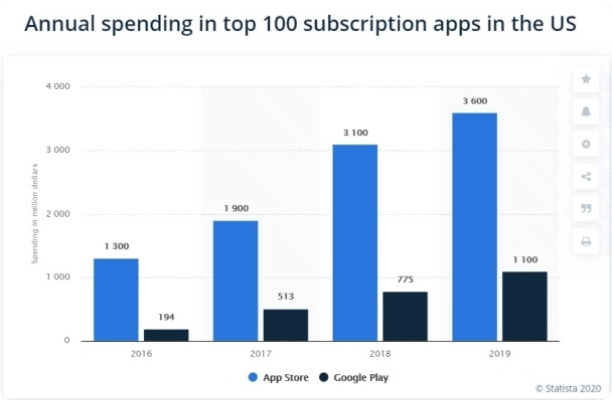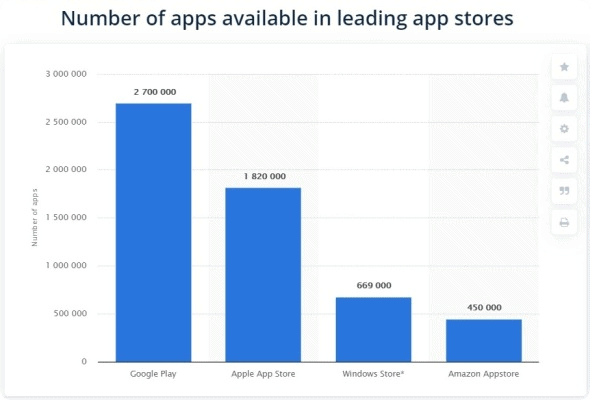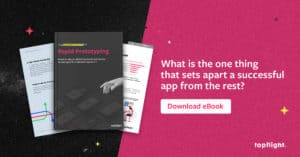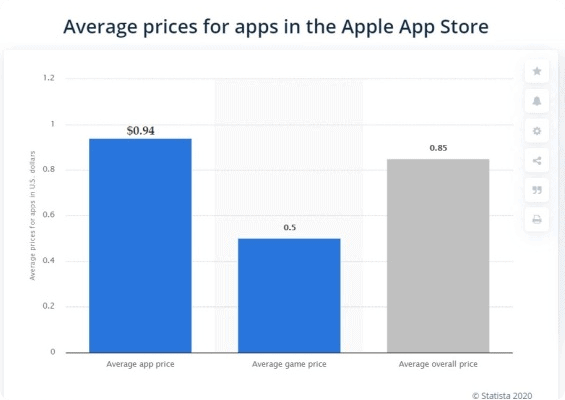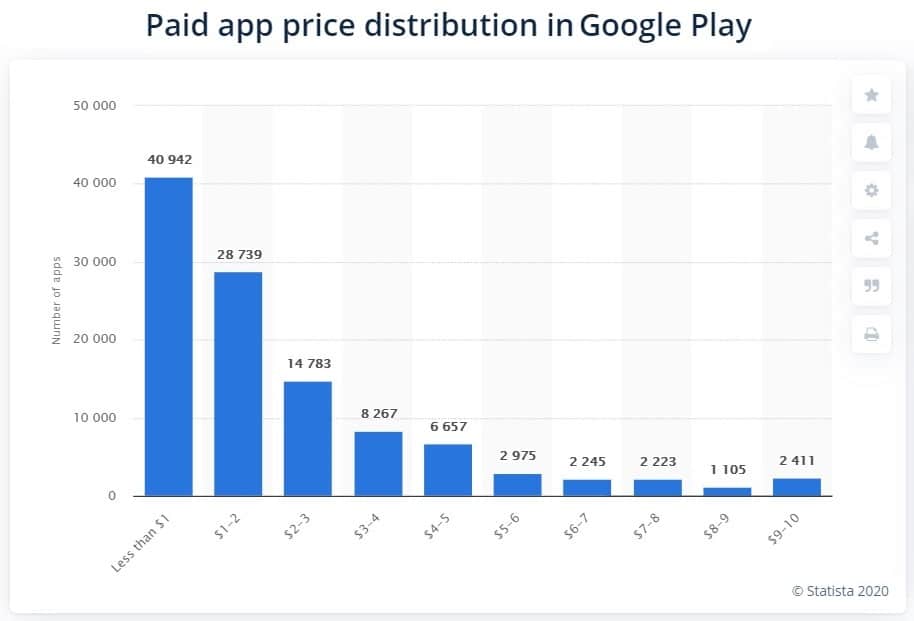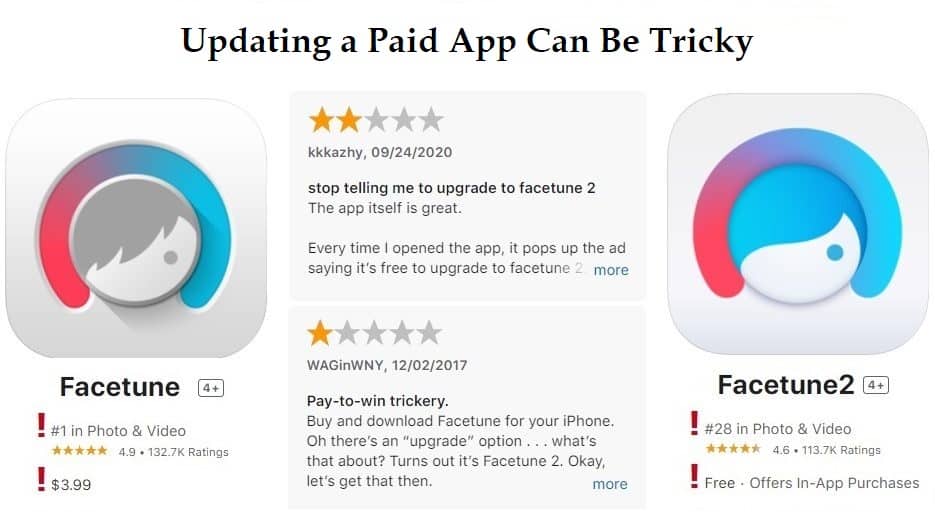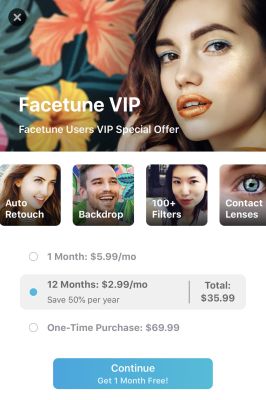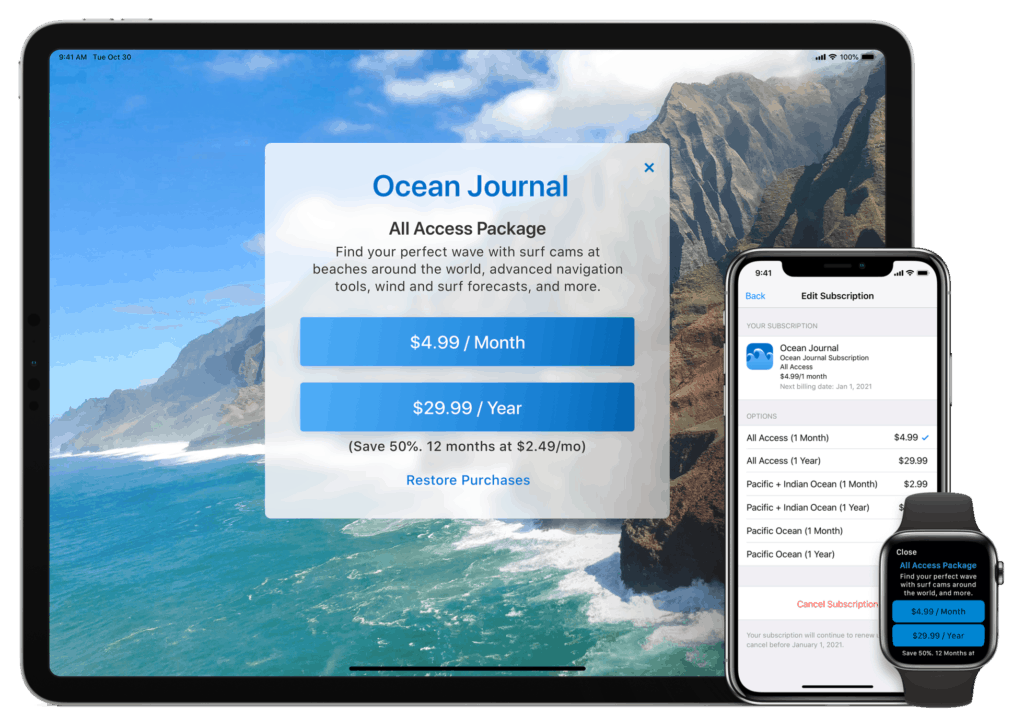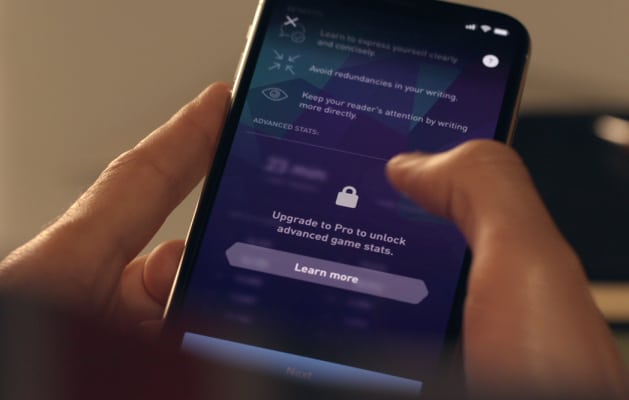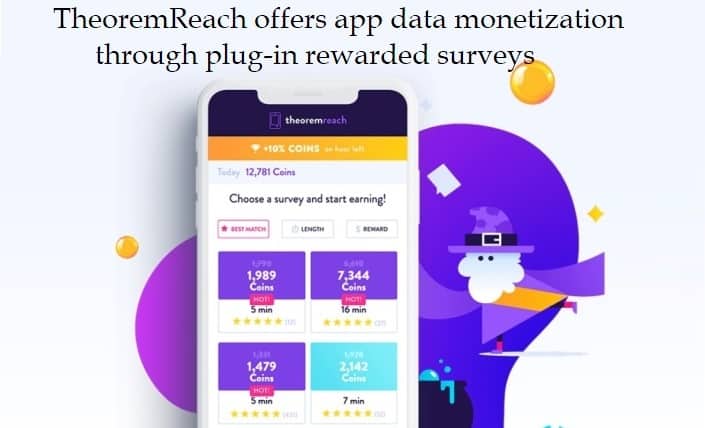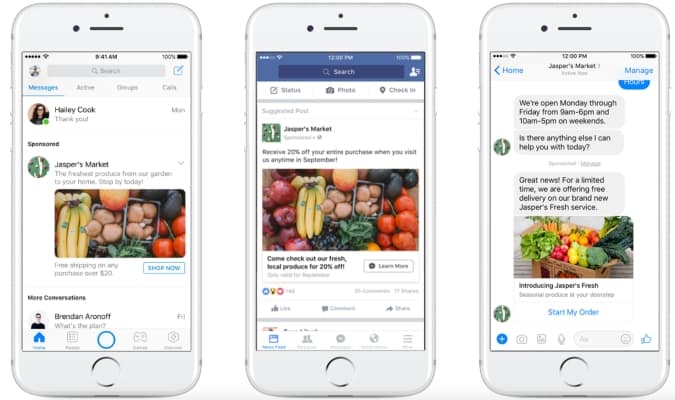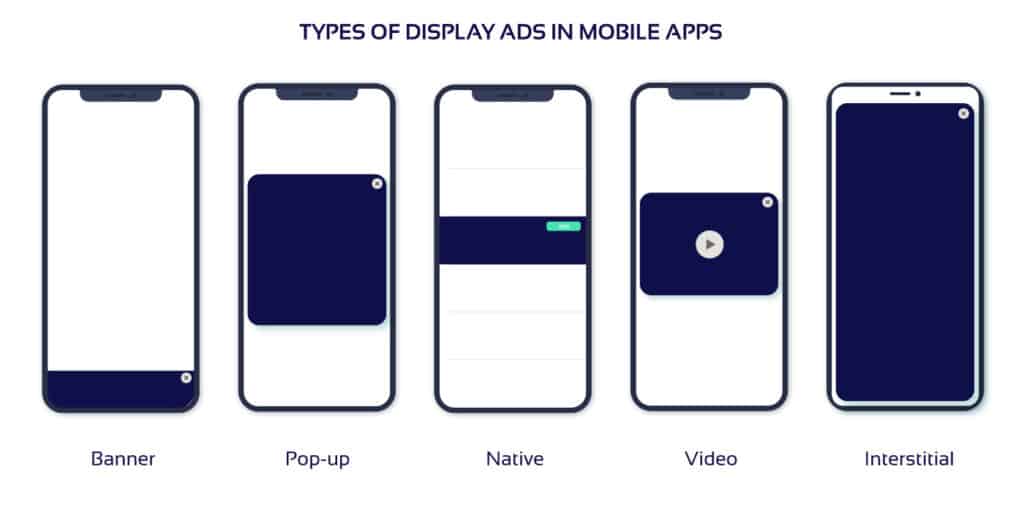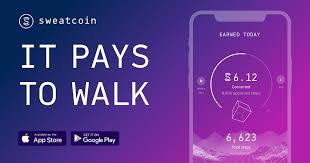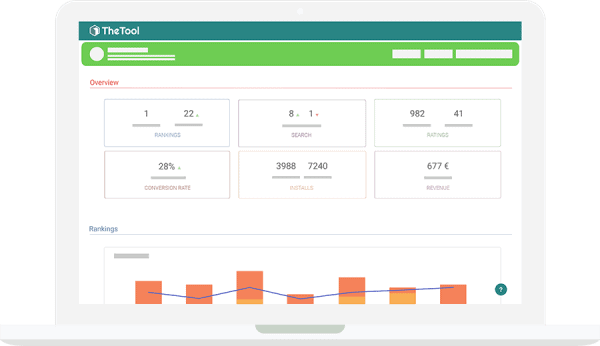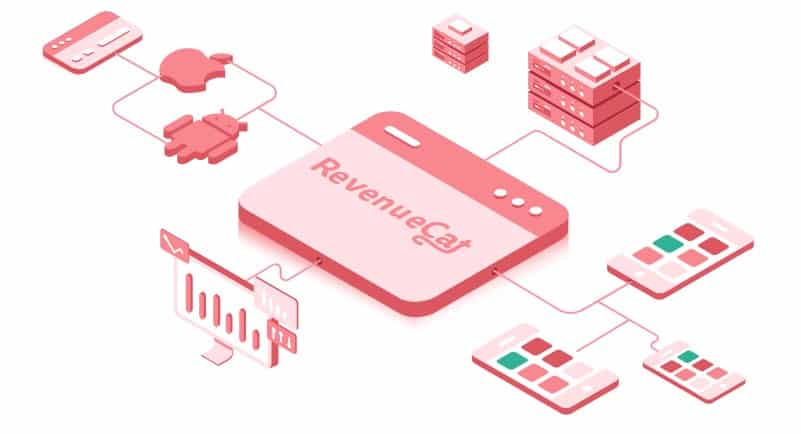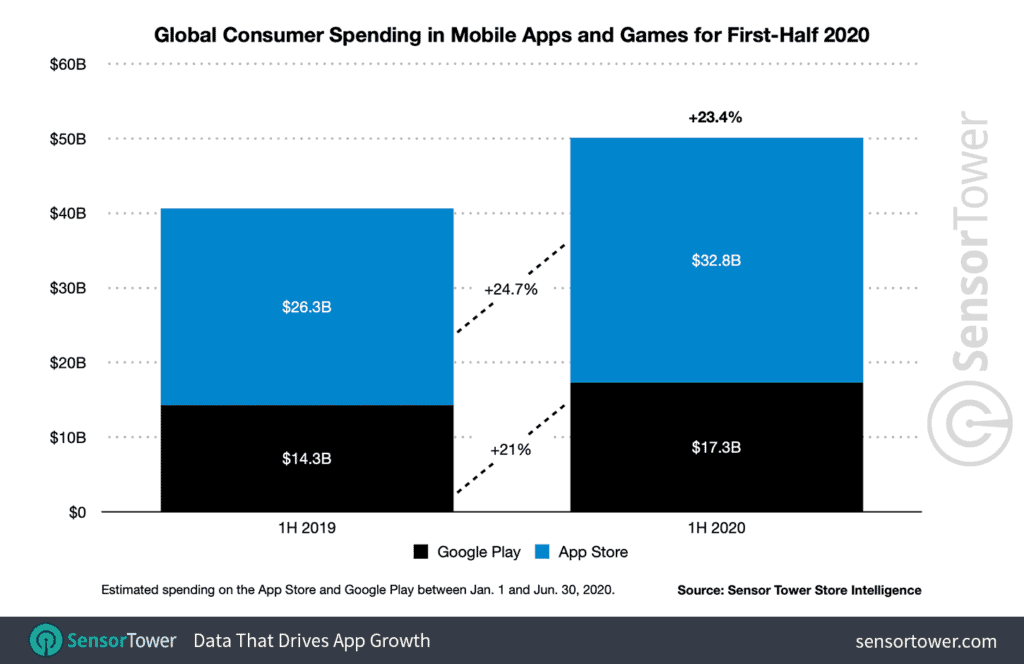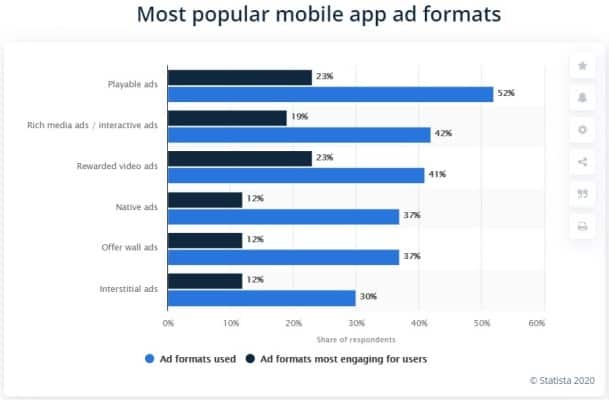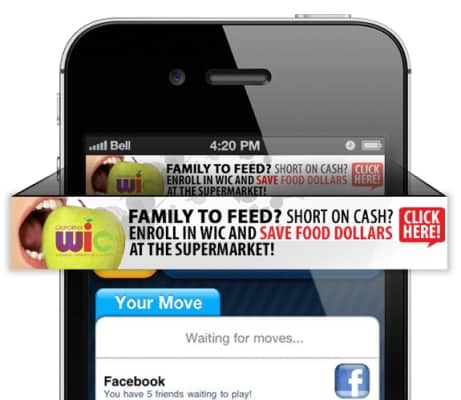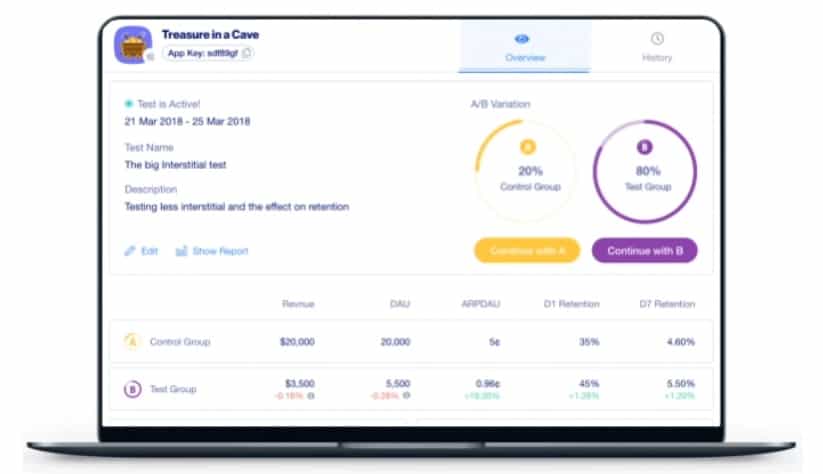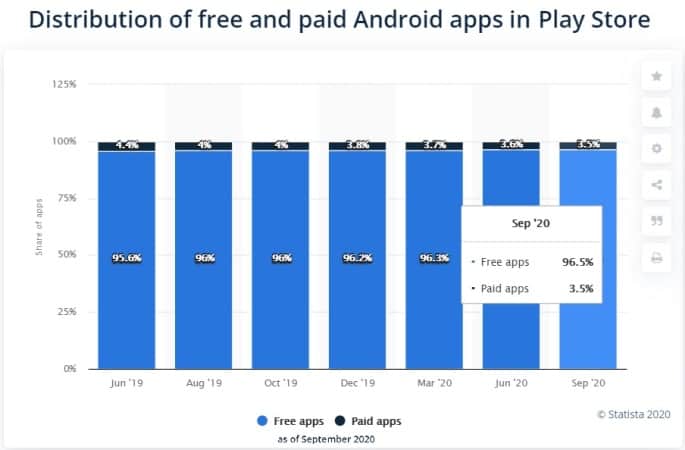Please ignore this post if you’re only looking to learn about the well-known app monetization strategies:
- paid apps
- subscriptions
- freemium, in-app purchases, etc.
Cause we’re going way beyond that in this guide. Among other things, we’ll talk about:
- apps paying users to monetize (that’s right!)
- monetization trends and best practices
- brand-new tools to monetize a free app
Key Takeaways:
- If you can naturally weave in subscription into your app monetization strategy, and your mobile product happens to add real value, you’re golden.
- Mobile applications earn twice as much in the Apple Store compared to Google Play, regardless of their app monetization models.
- Spend quality time researching how to monetize an app, specifically if it’s a paid application. We discuss upgrading a paid app, app bundles, the clips feature to demo an app, and a few more.
- One way of effectively monetizing your app is to set up a subscription outside the app at a more affordable price (without Apple’s fee).
If you’re wondering, “How does app monetization work for Android apps?” it’s primarily mobile ads.
In short, we’ll cover everything an app owner needs to know to navigate around available mobile app monetization strategies. So if you’ve had enough of monetization guides that describe endless variants of mobile ads instead of offering actionable advice, you’re in the right place.
- Paid business model
- In-app purchases (IAP)
- Subscription
- Freemium
- Data Monetization
- In-app advertising
- Reverse monetization model
- App Monetization Tools
- iOS vs. Android Monetization Strategies
- App Monetization Best Practices
- What Monetization Road Will You Take?
What is Mobile App Monetization?
App monetization is how apps make money. There’s not much to add here, other than to remind ourselves that app monetization comes into play when we start a business with an app. In other words, when our app is our business.
However, suppose we already run a business and want a mobile solution to promote or distribute our goods and services. In that case, we probably don’t need to worry about coming up with app monetization ideas because an app will essentially function as yet another channel for distributing our services and products.
App Monetization Trends
There are two things we need to know to be ahead of the game in 2020 in terms of monetization:
- Apple’s latest changes to iOS 14
- Pandemic’s effect on user behavior
In-app ads slowing down on iOS
First, mobile advertising will become harder to execute and, therefore, less effective on Apple devices because the company has granted users control over ad tracking. As a result, advertisers and ad networks might find themselves looking for new ways to optimize their spending on iOS ads.
If you’re seriously thinking about monetizing your iOS app with ads:
- Check that your mobile ads provider has updated their SDK to support iOS 14
- Add other monetization options to compensate for the potential slow-down in ad revenue
- Double-down on optimizing your ad potential on Android (if the mobile solution is cross-platform)
Rise of on-demand subscription services
The second big trend, caused by COVID-19 that you probably noticed on a personal level is the mass migration of businesses to mobile and online. If people spend their time on phones and can’t visit places, we need to reach them on their devices:
- subscription-based fitness apps are going to prosper
- if you can serve customers via a mobile app, figure out a way to introduce a subscription
Statista reports that users spend on subscription-based apps more and more each year:
Renaissance of traditional in-app monetization options
Since Apple has made it harder to pull the ad strategy trick on its devices, app owners will need to revisit traditional monetization options, e.g., paid apps. Besides, Apple has already introduced the new features in iOS 14 that we believe resonate well with the ads-are-not-the-holy-grail-anymore trend in monetization (more on that below).
Key stats on mobile monetization in 2020
If you’ve ever wondered how to monetize an app, you need to know these facts:
- Consumers spend 90% of mobile internet time in apps
- Your app will compete with 4.5 million other apps
- 92% of applications in the Apple App Store are free
- 97% of apps in the Google Play are free
- Mobile applications in Apple’s App Store earn 2x more than those in Google Play
Top 7 App Monetization Strategies
Back in 2008, when Apple first released the App Store SDK to developers, there was only one monetization strategy — pay-to-download apps. Today, we can choose from quite a few options.
Paid business model
Having just paid and free apps used to be straightforward and messy at the same time. For one thing, custom mobile app developers had to maintain two versions (free and paid) to let customers get a taste of the app before they bought it.
Another puzzle was figuring out an answer to, “How long do I support this paid version before charging my users again?” So, to keep adding new features to their products, app owners at some point had to trick users into upgrading to Version 2 while leaving the original software intact.
It’s worth noting that the average price of a paid application in the App Store is less than $1.
The majority of Android applications also sell in this price range:
When to use: when your mobile product is super niche, targets a premium customer segment, easily leaves competitors behind, and features a pixel-perfect product card in the App Store.
Limitations: higher cost of acquiring first-time users as people need to invest time before deciding on a purchase. You still need to figure out the question with how long you’re going to support your paid version.
Opportunities:
- you can combine the paid business model with in-app purchases to keep selling when a subscription model does not fit (Apple calls that Paymium)
- if you’re selling more than one app, you can bundle them and sell at a discount
- paid apps get more engaged users
Examples: FaceTune, Dark Sky Weather, HotSchedules, Procreate Pocket.
NB: note that with iOS 14, Apple has released a new Clip feature that allows you to surface the most useful features to users through micro-interactions. You can use this option to demo your app.
In-app purchases (IAP)
In-app purchases came as a great relief. We could finally start selling anything (digital) we wanted right in the app, regardless of whether it was initially a purchase or a free download. The most common IAP use cases include:
- upgrade to an unlocked full version
- remove ads
- buy in-app currency
Apple is constantly improving the tools for IAP. In 2020, you can enable family sharing for any in-app purchase and add IAP inside an Apple Watch app.
When to use: IAP is how Apple wants you to sell anything you can imagine, except for physical goods. Therefore, this monetization option should be the highest on your list of options to try (unless you aim at a subscription service).
Limitations: IAPs often become the subject of refunds. One good practice is to design a UI that excludes accidental purchases.
Opportunities: limitless. For instance, imagine offering users low-fee temporary access to your app’s full functionality, besides selling all sorts of digital goods. Besides, you can:
- display an in-app refund notification
- test IAP with Apple’s sandbox without incurring charges
- give away up to 100 promo codes for each IAP item
- get more payments from most engaged users by offering them consumable items
Examples: Candy Crush, Buy Me a Pie, practically every second application on your phone.
NB: think through how you approach users with an IAP offer. It’s a good idea to let them preview as much functionality as possible before asking them to cash out.
Subscriptions
What initially appeared as a means for media companies to sell their content via iOS devices almost 10 years ago, turned into the holy grail for all mobile developers in 2016.
You know Apple has a special place for the subscription model when you see a dedicated page with nuanced advice on gaining and retaining subscribers on the company’s site. This year, Apple took the trouble to come up with an automatic price increase consent sheet.
The sheet appears if you decide to increase the price of a subscription and requires customers to agree to the new price. Of course, you get to choose where in the application to show the sheet to your users. The best part, though, is that it’s designed to make it much easier to accept the new price than cancel.
When to use: When you actively continue upgrading your mobile software with new features or content, and users are likely to use it frequently.
Your app should be central to providing your services instead of being an extra channel. Otherwise, you’re better off with charging your subscribers only on your site.
Limitations: you can’t make a counteroffer when a customer decides to unsubscribe as it happens outside your mobile solution.
Opportunities: you can take home 85% of revenue (vs. 70%) for all subscribers who stick with the product for longer than a year. Other benefits include:
- enable a family sharing option for subscriptions
- offer different subscription tiers for different users
- provide a discounted or free trial for auto-renewable subscriptions
Examples: Tinder, Shopify, Apple Music, Calm
NB: You can offer a subscription outside the application to avoid the 30% cut by Apple. That way, you have a more affordable subscription for shrewd users (who know they can subscribe at the site) and a 30%+ variant for users who prefer the comfort of their phones.
Freemium
Freemium is when we download apps for free and then buy our way into premium functionality — either through a subscription or in-app purchases.
An obviously popular monetization variant, freemium sits in the second place after subscriptions. Its limitations and opportunities are the same as for IAPs and subscriptions since it’s nothing but a fancy name for these very app monetization models.
NB: technically speaking, a subscription is an auto-recurring in-app purchase.
Data Monetization
Monetizing user data is one of the recent options that hasn’t yet availed much popularity among app developers. The idea is to gather anonymized user data and sell it to interested parties.
Imagine a budgeting application that aggregates anonymized user data about the proportion of savings vs. expenditures and selling it to banks or insurance companies.
When to use: When you have a large user base and want to avoid any user experience interruptions.
Limitations: Ideally, you find partners interested in your data and negotiate a deal yourself. However, it’s recommended that you average 50,000 daily active users before doing so. Plus, you’ll need to add a prompt to collect users’ consent.
Opportunities: For what it’s worth, user data monetization seems like a viable option for several reasons.
- you can monetize nearly 100% of your users
- works with all types of applications
Examples: companies that use this business model are not specifically verbose on the subject. So there are not many examples of public applications at the moment.
NB: You can always use intermediaries like AppGrow or Epom Apps to simplify the process. All you need to do is install an SDK that takes care of data monetization in the background, in a non-intrusive way.
In-app advertising
Mobile ads fall behind subscriptions and freemium monetization options, but just by a small margin: They are still #3 in terms of popularity. Game developers will tell you that it’s nearly impossible to monetize apps without ads.
You May Also Be Interested: How to Create a Game App
A few things to remember if you want to monetize an app with ads:
- ad intrusiveness (you don’t want to ruin the user experience)
- ad platform’s ability to target users efficiently
When to use: in-app advertising is the most common, no-brainer approach to monetizing mobile solutions. Pick any free application in the App Store or Google Play, and in the 99% of cases, it’s going to feature ads.
Limitations: In light of recent updates to iOS14, monetizing apps through ads will become a challenge because without proper user tracking, ads will lose their efficiency. So look for alternative ways to monetize, e.g., add in-app purchases.
Opportunities: You can use several ad networks by adding their SDKs to your product and decide which one performs better. They all offer different types of ad formats to pique users’ curiosity:
- Interstitials (a clever word for full-screen ads)
- Banners
- Videos
- Playable/interactive ads (let users perform super-basic actions)
- Native ads (adapt 100% to native mobile UI)
Examples: All free games and most free applications, e.g., DuoLingo, Pinterest, Spotify.
NB: Native mobile ads will require some minimal coding, but we suggest you still go with them as they offer superior user experience, and you want to keep your audience engaged with the app as long as you can.
Reverse app monetization model
Products like SweatCoin, Lympo, and Bitwalk flip the whole idea of app monetization upside-down (at least in their customers’ eyes) by paying to users. “How do these companies make money and stay afloat unless they’ve raised enough capital to get by for a year or so?” you ask?
These mobile products usually feature sponsored products or ads. Quite often, these products can’t be exchanged for the earned currency. In addition, SweatCoin has recently introduced a subscription option for letting users earn more crypto coins. You might still wonder how such a monetization strategy works out for these companies in the long run.
Easy, they don’t need to sell your data to a healthcare provider or an insurance agency. But, they can sell their technology to an insurance company to bundle with an insurance package and lower premiums on it as long as the customer walks a predefined amount of steps per day.
You have to agree, that’s quite an innovative approach to app monetization. Therefore, our only advice here can be to look for inefficiencies around you and find a way to replace them with mobile solutions.
Check out our move-to-earn app development guide
App Monetization Tools
In the early days of mobile stores, app owners depended on Apple and Google for software performance analytics, which was pretty limited. Today, there’s no shortage of analytics platforms that help you optimize your app monetization strategies.
Using platforms like App Annie, TheTool, AppsFlyer, and Branch, you can uncover your real app monetization potential, comparing your application’s performance to competitors.
Price optimization tools
A Berlin startup has just entered the app analytics market with potentially a ground-breaking app monetization tool called Mage. The monetization tool analyzes user purchasing behavior and makes recommendations to adjust pricing to drive more conversions.
The team offers an SDK (for iOS, Android, and React Native) packed with AI smarts that make changing prices for IAPs seamless, without publishing an updated app version to the App Store.
Alternative Subscription Platforms
Tools like RevenueCat allow you to set up a single subscription mechanism on both mobile platforms simultaneously. Not only do you get a single source of truth about the subscription status on iOS and Android, but you can also set up and manage IAPs from a single place.
To help you optimize your monetization strategies, RevenueCat also provides you with analytics:
- monthly recurring revenue (MRR)
- life-time value (LTV)
- trials, churn rate, etc.
We’ve recently worked with RevenueCat when building a chatbot and were very impressed with how easy it was to integrate the SDK into the application and start tracking the results.
iOS vs. Android monetization strategies
Despite Android owning the notoriously large market share (75%), Apple’s App Store still remains untouchable when it comes to generating profits.
iPhone applications generate almost 2x as much as Android applications. Of course, that can tip the scales in favor of staying with Apple and focusing on monetizing exclusively in this store.
However, what do you do if your product is going to be available on both platforms anyway?
Best monetization option for Android apps
On Android, the best monetization option historically has been mobile ads, probably due to a massive audience. So that makes it a no-brainer for many companies to pick one of dozens (if not hundreds) of mobile ad SDKs as their monetization option.
According to Statista, playable and rewarded video ads are the most engaging mobile ad types.
It’s worth noting that Google also gives more freedom to developers allowing them to offer in-app credit card payment options alongside Google Pay. Unlike iOS app monetization, such Google’s forthcomingness allows you to bypass 30% cut on each purchase.
For example, if you check Tinder’s payment options, they have credit card payments enabled by default. Alternatively, you can offer your program outside Google Play and avoid including Google Pay altogether.
Best monetization option for iOS
In the App Store monetization realm, in-app purchases and subscriptions remain the preferred methods for earning revenue.
One word of advice is if you decide to go with ads, seriously consider user experience: when you show ads, how often, etc.
That’s because iOS customers have come to appreciate the premium user experience that is hard to maintain with ads, unlike Android users, who are more or less accustomed to mobile ads. Some say app monetization without ads is barely available to new-comers.
Related: Understand App Development Costs
App Monetization Best Practices
We realize that navigating around all these monetization options may be challenging. So, let’s spend a minute or two talking about the best practices that work across all these monetization models for apps.
Combine monetization options
For example, you can have a paid application with in-app purchases or even a subscription. You can even take it up a notch and implement mobile ads on top, but that’s going to be really tough to figure out. Apple customers are used to the fact that if they pay for a product upfront, it should stay void of any ads.
A/B test
When you mix and match different ways to monetize an app, remember to run A/B tests.
All major mobile ad providers have tools to A/B test their SDKs and APIs to see what works best for your audience.
Be careful with the paid model on Android
As we mentioned, Android app monetization mostly hinges on ads, but if you’re still thinking about turning your Android software into a pay-to-download solution, please take a note:
That’s how many paid Android products are there in Google Play right now (vs. 8% in the App Store). Either all these people with freemium apps know something about app monetization, or you’re in luck because the competition definitely seems low. You decide.
And if you decide to monetize an Android app with ads, remember that top-of-the-line ad types include playable, rich media, and rewarded video ads.
Freemium and subscriptions recommended on Apple devices
Again, if you check how much space Apple dedicates to the IAP and subscription business models in its developer guidelines, you can’t but notice that these two are the best way to monetize your app. Offer your users a free trial before subscribing them.
Take subscriptions outside the app on Apple
When you’re just starting and every little streak of income matters, you can ask users to specify their payment options on your website.
Although this approach may increase the upfront investment in development (you’ll need to build the user profile and integrate it with a payment processing gateway), it’ll pay back faster as you won’t need to pay a 30% or 15% commission to Apple.
Feeling lucky?
Experiment with user data monetization solutions like TheoremReach that allow you to integrate engaging surveys and monetize your user base by having them complete these surveys.
What App Monetization Road Will You Take?
Yes, mobile application monetization is a tough nut to crack, but we’ll help you do that. We’ll only ask you to share your knowledge of the target audience. And in response, we’ll come up with several optimal options for monetizing your app.
Related Articles:
- Top Mobile App Metrics to track for Growing Your App
- On Demand App Development Guide
- How to Develop an MVP
- App Store Optimization Guide
Frequently Asked Questions
Can I have multiple subscription tiers and in-app purchases in a pay-to-download app?
Yes, neither Google nor Apple prevents you from combining these monetization options into a paid product.
What's your advice for converting users in a subscription app?
Give them a free trial, offer several subscription tiers, adjust pricing for each country individually.
If I choose to go with a paid app business model, how do I arrange recurring payments from my customers to support further product development?
Either have product development costs accounted for in your upfront price, or introduce in-app purchases for unlocking additional features.
How does app monetization work in all these other Android app marketplaces such as Amazon or Samsung?
There’s a high chance that your users don’t even know about these app stores. So we wouldn’t advise spending time there and suggest you monetize an app on Play Store instead.
Is there a platform for A/B testing different app monetization options?
Check out this brand-new tool: https://www.getmage.io/. They will help you A/B your in-app purchases.
I plan to monetize an iPhone app with ads. What ad network should I pick?
Totally depends on your audience. If you share your knowledge of the target audience with us, we’ll recommend an appropriate partner. Of course, the most prominent ad networks include AdMob (Google), MoPub (Twitter), and Facebook’s App Ads.
This post was originally published on November 30th, 2019, and has been updated since for more updated data
